7 Sustainability Trends for 2025 and beyond & How to be Part of Them
The day we saw our Planet from Space, for a very first time, was one of the most fascinating human achievements in history. For a first time mankind acknowledged Earth as a living organism that is interconnected and interdependent with everything that is around, and whose health depends on the health of all its parts.
Yet, it took another 40 years for humanity to realise that “The time has come to take the decisions to secure the resources needed to sustain this and coming generations.” ( Our common future. 1987 )
It wasn’t until 1983 that the World Commission on Environment and Development by the UN General Assembly was established. They first outlined and put forward the concept of a sustainable development in the famous report – “Our Common Future”.
“Sustainable Development is one that meets the needs of the present without compromising the ability of future generations to meet their own needs.”
– Our Common Future
As simple as this concept sounds, it took another 30+ years before it started being acknowledged globally

Entering into 2025 we still face the very same problems presented in the Common Future report from 1987.
One thing, noticeably different today, is the continuously rising level of global environmental awareness.
More and more people come to realize that the air we breathe and the water we drink don’t recognize local, national or even continental boundaries. More and more people globally are willing to take responsibility for the impact they have on our surroundings.
Here are the 7 sustainability trends to follow and act upon in 2025 and beyond!
1. More environmentally conscious consumers entering the market.
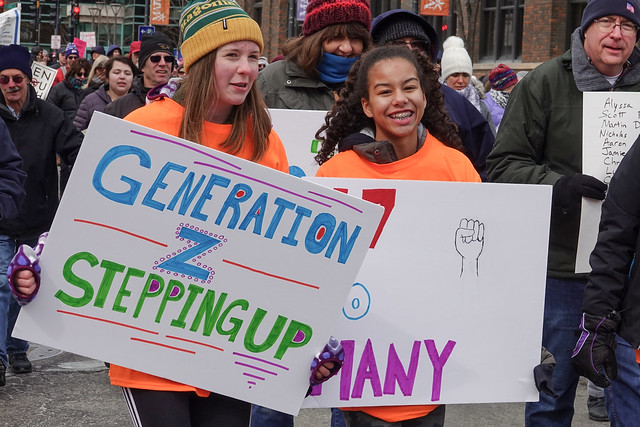
We are already seeing the power of Millennials (born between 1980 to 1995) who now generate the most demand for sustainable and organic products. Their market influence will definitely continue to rise as their spending power gradually increases.
What’s even more exciting is the emerging transformative potential of Generation Z-ers (born between 1996-2010) who are now entering the workforce and account for 32% ( (Lee J Miller and Wei Lu. “Gen Z Is Set to Outnumber Millennials Within a Year”. bloomberg.com.) of consumers globally in 2019. They are particularly eager to participate in the creation of a more sustainable world. They shamelessly demand from government and companies to address and take stand in pressing global issues like poverty, hunger, environmental positive impact and human rights.
According to a 2018 survey ( GenZ: Emerging Talent. Atkins Consultancy. 2018 ), 49% of GenZ are willing to spend more on green products and 31% have already boycotted companies they regard as unsustainable. A whopping 83% think that governments should listen to their demands when it comes to sustainability because they feel current leaders haven’t done enough to protect the environment. Over 60% are willing to participate in a shared economy and inspiring 50% are reporting they are already taking actions to cut their energy consumption. 59% are interested in studying or having jobs related to sustainability!
What can YOU do:
Regardless of your generation, you can certainly join Millenials and Z-ers on their mission to shifting the global consumer power. Here are few actionable ideas:
- Actively follow local environmental news and demand authorities to take visionary decisions aligned with long term sustainability goals.
- Boycott multinational brands, known to have exhausted the environment and exploited workers in poor countries for ages.
- Use water and electricity mindfully.
- Educate yourself and apply the concepts of circular and shared economy.
2. Growing demand for Zero-Waste shopping
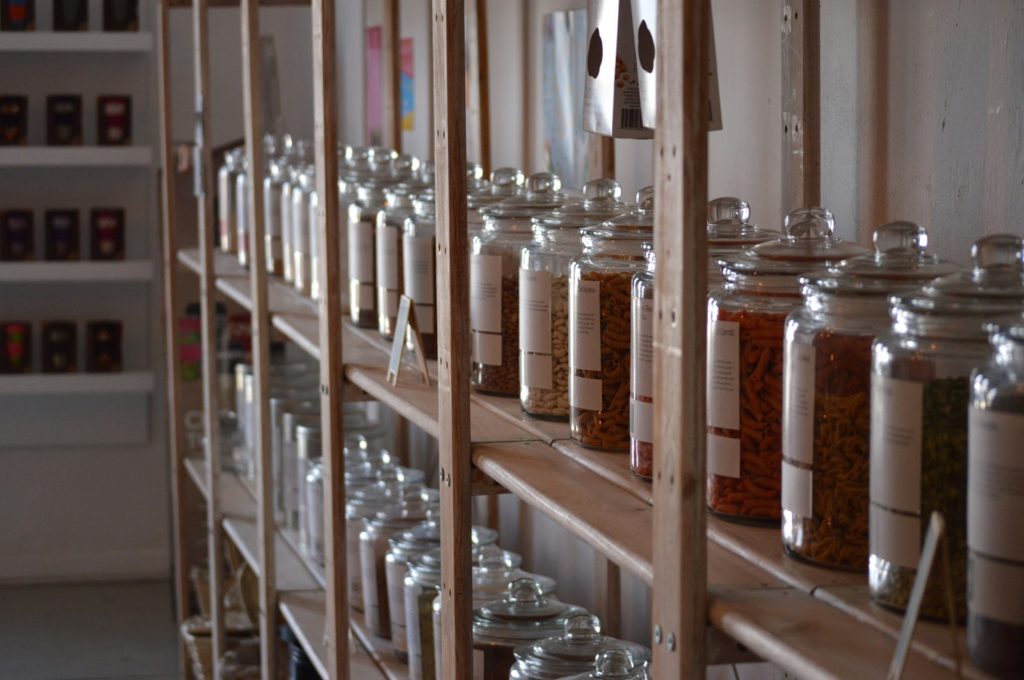
Today, over 40 years after the introduction of the universal recycling symbol by Gary Anderson, only 14% of plastic packaging is collected for recycling ( the Ellen Macarthur Foundation’s report – “The new plastic economy” ).
Each year, at least 8 million tonnes of plastics find their way into the ocean. As that is a number difficult to grasp, you may picture it as an average garbage truck trashing its content into the ocean every minute. Estimates suggest that plastic packaging has a major place in this leakage. 32% of plastic packaging is illegally dumped or mismanaged and 40% is simply disposed of in landfills.
Think about that next time you grab that plastic-wrapped cucumber from the shelf.
Astonishing 62% of all items (including non-plastic) collected in coastal cleaning operations internationally are in fact packaging trash.
The annual damage of plastics to global marine ecosystems is calculated to be USD 13 billion per year. The Asia-Pacific Economic Cooperation (APEC) estimates that the damage of ocean plastics to the tourism, fishing and shipping industries is valued at USD 1.3 billion in that region alone (United Nations Environment Programme, Valuing Plastic: The Business Case for Measuring, Managing and Disclosing Plastic Use in the Consumer Goods Industry (2014).)
Even in Europe, where the leakage is relatively limited, potential costs for coastal and beach cleaning could reach EUR 630 million per year ( European Commission, Directorate General for Environment, website, Our Oceans, Seas and Coasts: 10: Marine Litter.)
And that is just the beginning, no one could really estimate the true cost over time if we allow losing close to 700 marine species that are already endangered by plastic ocean pollution.
Ironically plastic packs are to these days considered a cheaper and convenient alternative…
I am sure Ralph Willey couldn’t have imagined what his accidental discovery of the first-ever in history plastic food wrap, in 1933, would have lead to,
No wonder zero-waste shops are popping one after the other in developed countries and we are about to see a lot more of that in 2020 and in the future. A zero-waste shop goes beyond the idea of charging or banning plastic grocery bags. It literally eliminates all kinds of useless plastic wraps you could see in a supermarket – from individual fruits and legumes wrapping to packs for beans, nuts, and even cosmetics.
Here are some resources to find a zero waste shop in your area:
Worldwide: https://www.bepakt.com/
Mostly Europe: https://zerowastemap.org/
United States: https://www.litterless.com/wheretoshop/
Another zero waste trend that will grab growing attention in 2020 is edible and biodegradable packaging. While these are still relatively new and even controversial solutions, they steadily pave their way into the mainstream. 2020 will be a year of doing more and more research and development in that direction.
Growing consumer concern about plastic pollution in oceans and landfills will pressure more food companies to address their packaging impacts. More organic and sustainable food companies are expected to move to biopolymers and other sustainable packaging materials. The new concept of Natural Branding, introduced by the fresh produce distributing company EOSTA, will also gain momentum. EOSTA reported that they have saved 6.3 million pieces of plastic in the first year of using laser marks in replacement of traditional labeling.
What can YOU do:
While going fully zero waste may sound like an extreme idea, taking even small steps in that direction and leading by your example is a great way to start!
- Avoid buying unnecessary plastic-wrapped food in supermarkets.
- Find beans and grains sold in bulk and put them in your own cloth bags or reuse old plastic bags that you might have at home.
- Find a natural cosmetics shop, they usually sell their items with reduced packaging material.
- Choose products that used recycled or biodegradable materials for packaging.
3. Making recycling environmentally friendly
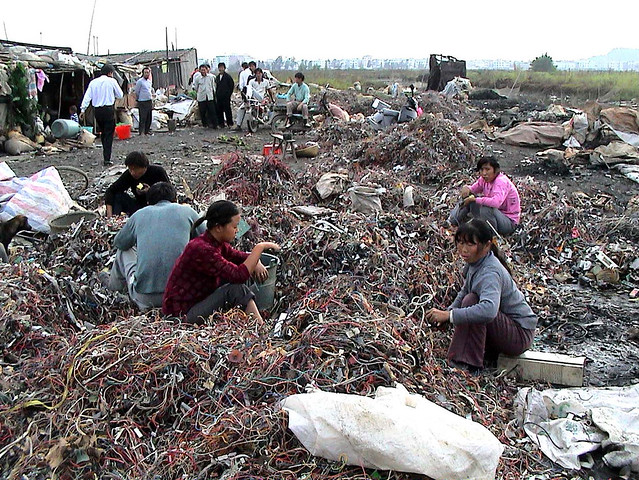
Most people in the developed world, who passionately follow recycling guidelines and directives, don’t have a clear understanding of what’s involved in the recycling process itself, beyond separation and collection. Only a few realized, by now, that recyclable trash is a commodity, sold to factories in distant parts of the world. Factories with usually low or no regulation at all for their processes and labor conditions.
Rich countries recycle “their own high-quality plastic domestically and export low-worth plastics to Asia.” ( Recycling is not enough report )
China is, or to be precise, WAS the world’s biggest importer of trash.China has taken in more than 45 percent of the world’s plastic waste since 1992. ( UN commodity trade database )
Nearly ALL plastic waste from the USA, EU and other parts of Asia was being shipped to recycling factories in China, supplying in return cheap cardboard or yarn. While businesses proudly brag for buying back and using such materials as environment friendly, the truth is that the recycling process itself is highly polluting within China.
The industry boomed so fast that it became highly decentralized and poorly regulated. The imported trash almost never comes in a pure form, it is usually contaminated with sometimes highly hazardous unrecyclable substances. Chinese workers most often than not, don’t have proper safety equipment to handle the contamination.
On top of being deteriorating for their own health, the contaminated waste is also devastating for the Chinese environment as it usually ends up in local landfills or bodies of water and eventually finds its way to the Ocean. Hence, China is also crowned the biggest polluter of the Ocean by international researchers…ironically China is polluting the Ocean with international trash.
These recycling practices only add up to the rest of the growing environmental problems China has been facing since its rapid industrial development.
China’s first attempt to regulate the industry back in 2011 seemed to have failed. They are now taking a radical new approach as a quick response to the recycling pollution crisis. The Chinese government simply ruled it out in 2017 – “We don’t want your trash anymore”.
This decision is already in effect with an import ban of 24 types of ‘solid waste, including types of plastic and paper scrap, in addition to a set of extremely strict standards for the waste that it will continue to accept. More waste materials are expected to be banned and regulated in 2020.
What does this mean for the rest of the world?
Ideally we should consume less plastic. Several countries and cities are taking the leap with banning single-use plastics. Kenya has even criminalized plastic bag producers, sellers, and consumers, who now face up to 4 years in jail or a fine of 38,000 USD.
While this action will not fully solve the recycling crisis immediately, it is at least a step in the right direction. EU’s ambitious strategy of making all plastics reusable or easily recyclable by 2030 is definitely worth watching closely.
Unfortunately, businesses that lost their recycling partner in the face of China are now looking to other Asian countries such as Taiwan, Malaysia, Vietnam, Thailand, and Turkey. Malaysia became the “new dumping site” according to Greenpeace. Things went out of control so fast though, that by the end of 2018 Malaysia and other Asian countries started considering trash bans of their own.
Surprisingly, Europe found a low regulated recycling partner in its own backyard. The Year 2020 started with a huge scandal over garbage imports in Bulgaria. Weak regulations and complete lack of any control made the country the perfect dumpsite.
A smarter response, developed countries will most certainly take in 2020, would be to develop more strict regulations in order to minimize contamination level in the recycling facilities so that the process itself becomes eco-friendly.
What can YOU do:
- Make sure you clean your plastic waste before you separate it.
- If you haven’t done so yet – stop using plastic bags!
- Refuse straws and other single-use plastic trash.
- Buy liquids in glass bottles whenever possible.
- Give your own mug when buying coffee or fresh juice to go.

Support Wize Living with 5$
4. Biophilic design entering the workplace
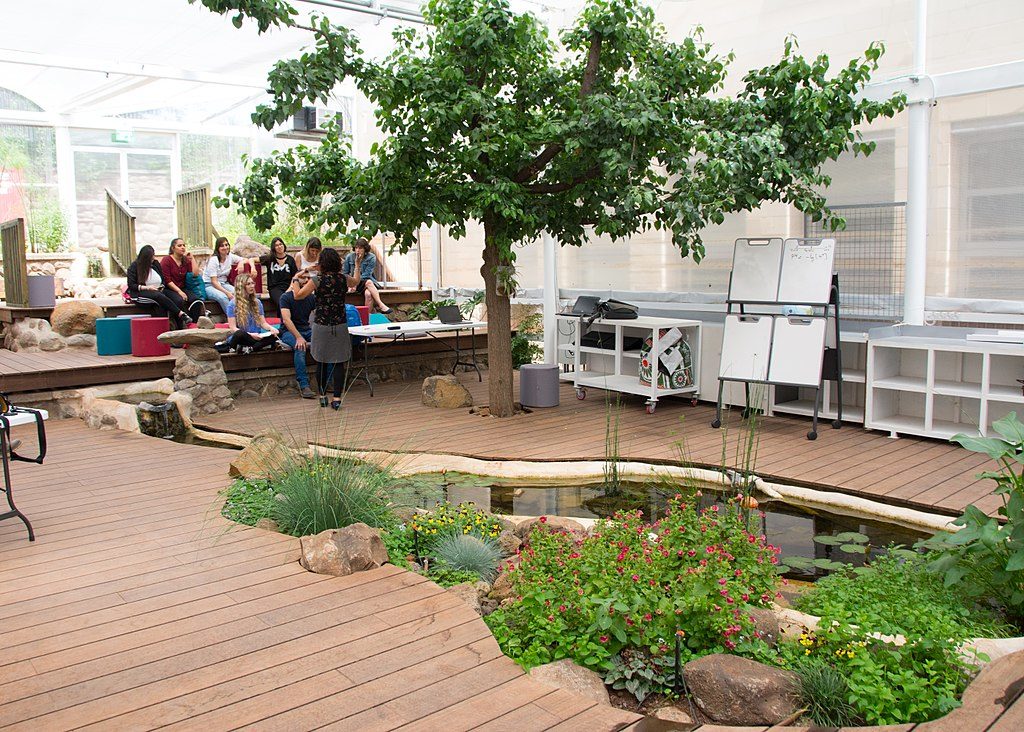
Biophilic design is not a new concept but definitely something you’d start hearing a lot more in 2020 and the years ahead.
The term Biophilia simply translates to “In love of all living things” (from Greek). You may look at philia as the opposite of phobia, which is an innate fear of something. Biophilia is a term used nowadays to explain people’s affinity with the natural world and our deep desire to affiliate with other living things.
– tephen Kelert, social ecology professor and one of the pioneers in the biophilic research.
“A biophilic relation with nature is considered to be a fundamental biological need that influences people’s health, productivity, wellbeing and even existence”
While science still struggles to explain how and why is this subtle connection between humans and nature working, there is a multitude of existing studies showing the effect nature has in our day to day life.
Since our modern world requires most of us to spend close to 90% of our time indoors, we must find a way to satisfy our deep need to be close and in touch with nature.
Recent studies have shown a positive correlation between nature, productivity, and creativity in the human brain.
Biophilic design seeks to achieve just that when creating workspaces or home and public environments. It is not just adding plants or green walls, it is a holistic approach to addressing the appropriate lighting, space proportions and air quality within the indoor environment. ( Abdelaal, Mohamed & Soebarto, Veronica. (2018). History matters: The origins of biophilic design of innovative learning spaces in traditional architecture. International Journal of Architectural Research. Volume 12. (108-127). 10.26687/archnet-ijar.v12i3.1655. )
Biophilic design can reduce stress, enhance creativity and clarity of thought,
improve our well-being and expedite healing.
Entering into 2020 forward thinking employers will go one step further in supporting their employees. Going beyond caring for their physical wellbeing and taking action to satisfy their emotional and cognitive needs as well through deploying the biophilic concept at the workplace.
What can YOU do:
- If you are an employer, consider incorporating some biophilic concepts at the workplace.
- Apply biophilic concepts at home too.
- Spend more time outside in Nature.
5. Eating smarter going mainstream
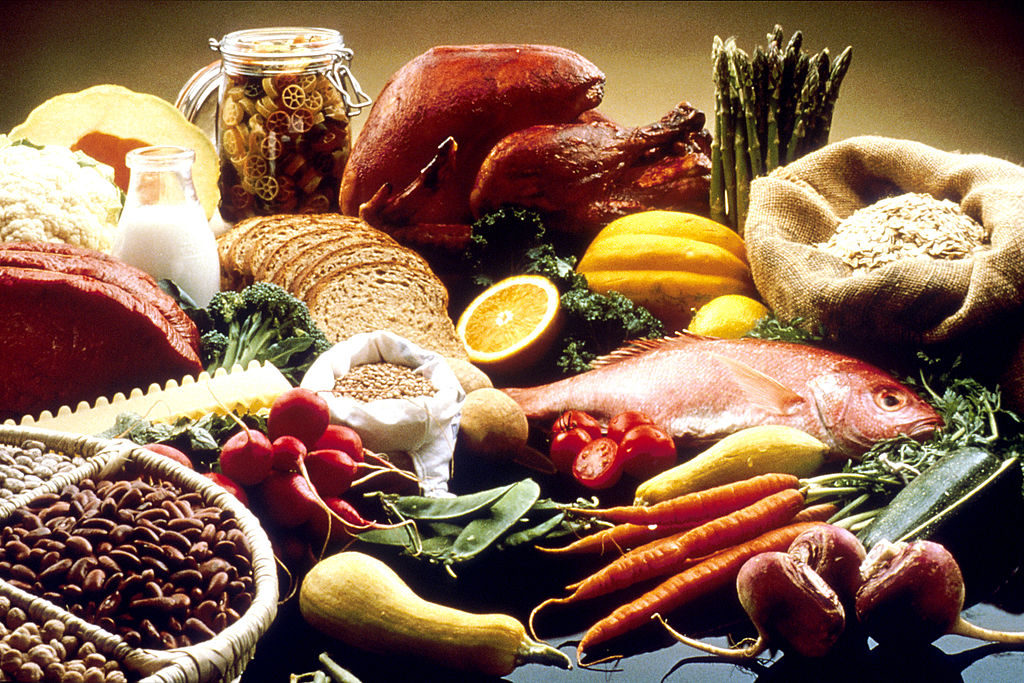
According to the World Health Organization, global obesity levels nearly tripled since the mid-70s. As of 2016 close to 40% of adults worldwide were overweight and 13% were obese.
These numbers are only expected to grow if we continue on the current path of mindless eating.
So what went wrong?
Since the beginning of civilization salt, sugar and fat were worshiped by humans for the delicious flavor they added to food.
At the very beginning of the 20th century, and still the very early days for the food processing industry, scientists discovered that a proper combination of these 3 ingredients can result in a cravable state of pleasure and hedonism for those consuming them.
The term “bliss point” was coined by the American market researcher and psychophysicist, Howard Moskowitz.
Food magnates applied this new concept of “craveable foods” in almost anything; consumption and profit started soaring. And so, it all began.
In more recent times another flavor-enhancing ingredient gained popularity, the so called Monosodium Glutamate (MSG). It is produced by the fermentation of starch, sugar beets, sugar cane or molasses. While its natural form is present in our bodies and in certain foods like tomatoes, the long term health effects of its artificial addition to our diet are still unknown. One thing that is certain – MSG makes food even more flavorful, creavable and addictive.
And…this is also how we killed our taste buds.
You know something is not right when you see your father adding salt on feta cheese.
Constant exposure to enhanced flavor, “bliss point” foods, makes you want not just more food but also more salt, more sugar and more fat added to it. This is completely normal as we get used to the enhanced flavor and we start “losing the bliss”.
It is a natural response to seek that “bliss”, so people simply started adding more salt, more fat and spices enhanced with MSG to home-cooked meals as well.
A raw, unprocessed leafy green became awfully tasteless.
Around 30% of total daily calories on average in the developed countries, come from sugar and fat. (What the world eats report)
Add to that the rise of meat consumption which is over 300% globally since the early 60s, and there you go – you have the perfect recipe for the overweight pandemic.
Fortunately more and more people awake to the simple fact that the food, one eats, directly affect their health. Going back to Gen Z, they don’t even put fast food chains in their top five nutrition choices (one of the biggest “bliss point” masters). They would rather pay more for organic, fresh meals.
There is also a gradually growing curiosity for reading the food labels. People who did not care before, now start paying attention to the food ingredients. People who just paid attention to ingredients quality before, now start to also consider the packaging choice, how and where was the product made etc.
This shift in consumer behavior will put more and more pressure on the food industry to change in order to keep up with the wave.
What can YOU do:
Changing eating habits might be difficult but definitely worthed as most of the modern day diseases are now known to be very closely related to our diet choices.
- A good place to start is to do 10 days “taste buds cleansing diet”. Eat only unprocessed, unsalted and unsweetened food with no fat for 10 days and I challenge you to notice the difference in your taste afterward. You may be surprised!
- Read the labels! Avoid foods with added sugar and salt or MSG.
- Avoid foods with palm oil and corn syrup.
- Add more veggies and fruits to your daily diet. Reduce meat consumption.
6. Farming bees in urban environments
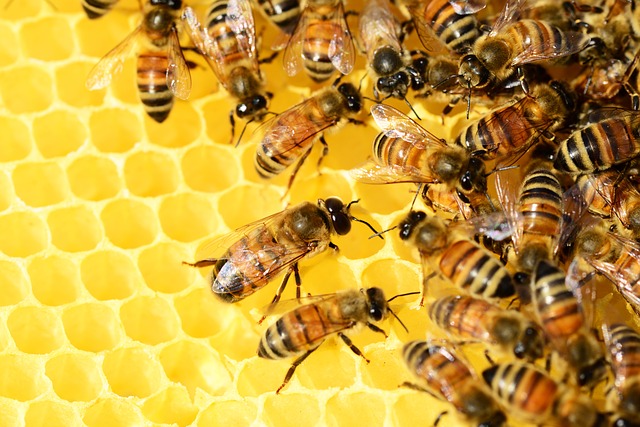
Urban beekeeping is not new. In fact, the growing concern around bee colony collapses and the potential environmental damage has pushed many people, businesses and institutions to create a movement around urban beekeeping. It has boomed in popularity over the last 9 years and is still on an uphill trend.
Hives could be seen in backyards, rooftops and even in various government agencies in the heart of Midtown Manhattan, Metro Washington DC, Brussel, London and the list is going on.
Findings from the Urban Beekeeping Lab, point that surprisingly bees produce more honey and survive the winter at a much higher rate in an urban environment, compared to hives in rural areas.
The overall urban environment is believed to be more bee friendly by researchers because of the greatest diversity of plants in urban parks and balconies and the lack of pesticides. The quality of honey, they claim is comparable to rural beehives.
This last statement is a bit arguable, because it does not take into account the myriad of urban pollutants that stick to urban plants and are being processed by bees in the urban honey production.
It is also not certain how city bee farming would help with a potential pollination crisis in the case that rural bees disappear. We could of course use cities as “habitat islands” for bees in order to preserve them as species. This won’t do much for our preservation as species though, if we cannot find a way to spare bees in rural and natural environments where they belong and do their job in the ecosystem.
Urban beekeeping will keep growing in popularity in 2020 and will do a marvelous job in spreading awareness, education and search for long term solutions.
What can YOU do:
- If you live in an urban environment, make your balcony pretty and bee friendly by adding few colorful, fragrant flowers. Bees love a variety of flowers, you can try with lavender, roses or smelly herbs. If you have access to your rooftop – transform it into a cozy, flowerful bee sanctuary.
- If you want to go a step further, try adding a beehive on the rooftop.
- Buy honey from rural bee farmers.
- Demand from local authorities and big chemo companies to dismiss the use of neonicotinoid pesticides, known to be harmful for the bees.
- If you use pesticides yourself, always check the label and boycott pesticides with neonicotinoid inside.
7. Using blockchain technology for sustainable impact

Blockchain technology is still an exotic term, often associated and mistaken with the fallacy of cryptocurrency and initial coin offering promises.
For the purposes of this article I will not go into detailed explanation of the differences.
Here is a great resource for learning more about blockchain solutions beyond the cryptocurrency hype.
In brief, blockchain is simply a record keeping technology that allows for recording public and private information that could never be tampered.
There are several projects working in direction of employing this technology in the social impact and sustainability sector.
While these developments are still in their infancy, 2020 will bring them up to public attention as more and more working projects pop up.
One interesting use case of blockchain is to promote transparency in the social funding sector. A sector that has been bluntly corrupted for years, to a point of losing trust completely because of lack of transparency how funds are being used and how is any sustainability impact actually measured.
Watch now: Bringing trust back into the charity sector
Alice is a financial platform for measuring impact on social projects. It helps impact investors, governments and nonprofits fund projects with fully tracked impact data and low transaction costs. Why is this platform so much needed and how it deploys blockchain technology we will learn from the founder Areti Campyli in the following video talk.
Watch now: A new economic paradigm – turning impact into capital
The IXO Foundation is a South African, blockchain powered, platform for collecting, verifying and tokenizing any project’s impact data, which can then be monetized, shared, or traded. Using the IXO protocol, organizations and funders can use a decentralized impact exchange to create verified impact claims The data from these impact claims becomes a part of a global impact ledger, an open data commons that organizations, governments, and researchers can access to make informed decisions and optimize impact initiatives. IXO is proud to be partnered with Singularity University Venture, Innovation Edge, and UNICEF. In-dept explanation of all these concepts are presented by Fennie Wang, strategy and legal for the IXO Foundation.
Another promising solution that blockchain technology can offer for sustainability is a way to encourage and reward environmental positive behavior.
Watch now: Stimulating purchasing behavior for climate change
For years we have put our faith in the market to incentivize cleaner technology, and for years the carbon market has been riddled with corruption. AND It is still cheaper to pollute and buy carbon credits than it is to change industrial production processes. Chooose is building a solution that has the potential to change that by revolutionizing the carbon credits market. How they plan on doing that and what does it have to do with blockchain we will learn directly from Andreas Slettvoll, founder of Chooose.
Watch now: Bringing carbon back to earth in a scalable and profitable way
Skymining is a concept and technology that aims to reverse the flow of carbon; sending carbon from the atmosphere back to the earth. The reversed flow is then used to produce carbon negative fuel replacing fossil fuels, organic food, and renewable fibers while restoring degraded ecosystems. How this works and what is its connection to blockchain we will learn from Skymining founder Carl Pendragon in the following video.
What can YOU do:
- Educate yourself about the basics of blockchain technology.
- Find and follow social impact projects created within the industry.
- Join forums and discussion groups to stay on top of that wave.
—–
If I have to summarize these trends into one sentence, it could be that 2020 will be the year of a growing sense of one’s responsibility in making lifestyle choices and a growing awareness of the collective consumer power to positively impact local and global policies, markets, industries and Life itself.
While at times it feels we are helpless to change a thing alone, the ripple effect of our individual example creates a far greater impact over time than one could imagine. The mere fact that you are reading this and would probably talk about it later could make a huge difference in somebody’s lifestyle decisions; who might, later on, influence somebody else and on and on and on.
Entering into 2020, there is a lot of work ahead in building a future our children will want to live in.
Every single simple action matters!

Support Wize Living with 5$
Leave a comment below:


April 3, 2020 @ 1:16 am
Great web site! It looks extremely good! Maintain the great work!
April 15, 2020 @ 10:06 pm
Hey thanks for this comprehensive article! I love the inclusion of avoiding Palm Oil in number 5. Would you also recommend reducing the consumption of animal products due to the significant environmental impact as well as health benefits? Not necessarily eliminating it, just starting by reducing it. There’s no one-size-fits-all here just curious.
April 16, 2020 @ 6:01 am
Thank you Chris! Yes, I will add your suggestion to the list.
Your Personal Sustainability Planner App by Wize Living
April 22, 2020 @ 7:18 am
[…] single-use plastics. We know already that plastic wraps are the main water and landfill pollutants, so this is a great starting […]